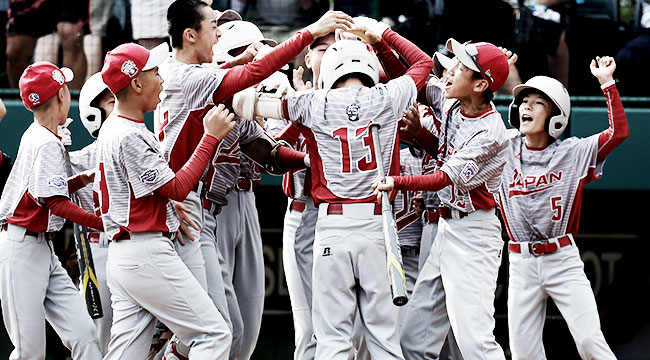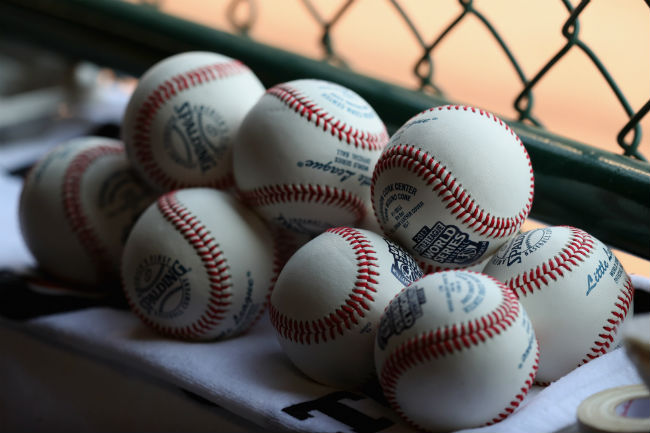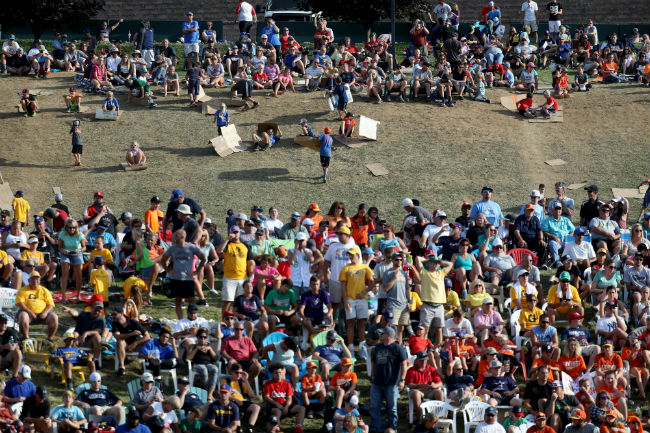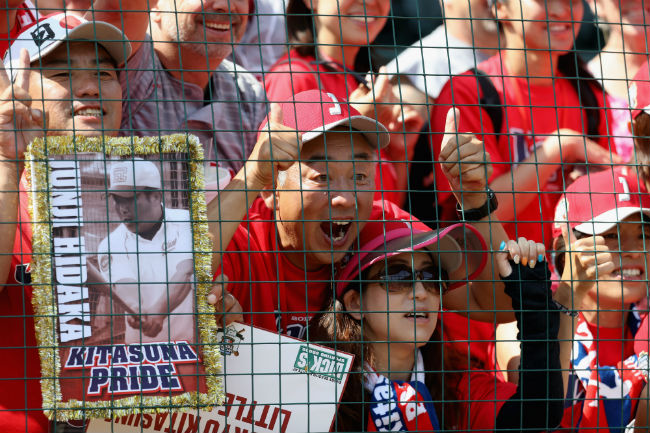
You have to cross the Susquehanna River to get to the Little League World Series. That’s because the games themselves take place not in Williamsport but South Williamsport, Pennsylvania, a neighborhood tucked between the West Branch of the river and some hills that separate the borough from Armstrong township.
Baseball wasn’t born on the Susquehanna because it wasn’t born anywhere. The record on it is fuzzy: no one really knows who invented it or where the rules came from. But Abner Doubleday and Cooperstown get the credit because they asked for it. Today the Baseball Hall of Fame sits to the northwest in Cooperstown, New York. And while baseball’s perfection has no true origin story, it’s safe to say the game grew into its own in the river’s watershed.
Cooperstown and Williamsport are towns made from much of the same cloth. Over the summer a friend visited Cooperstown, for example, and posted a picture to Instagram of a lovely old house they parked in front of a few blocks from the museum. It was instantly recognizable as the same one my family parked near a decade earlier on my first visit. Cooperstown is just that kind of place, and so is Williamsport. It’s a town that has fireflies. It’s stable and consistent, a friendly origin story woven into a geographic location’s very soul.

On the flight to Philadelphia I was talked into taking the “scenic” route to Williamsport. It would take about a half hour longer, but it would also take me through Harrisburg, which would be a better option in case something important happened and I had to hop on some WiFi and write. It was a quiet Saturday, though, and so it was an extra 30 minutes spent on the road for no real reason.
He was right about it being scenic, though. The mountains were beautiful in late August, lush and green and at peak vibrancy. There are parts of this country that are forgottenly gorgeous, looked past or flown over on the way to somewhere more interesting with little regard for the people who live there or the things they hold dear. In a way I was retracing my steps in driving northwest to Williamsport, but it felt fitting. Flying to Williamsport would have taken away the physical distance the place has from the rest of the country. It’s not a place you visit accidentally. You can drive through it on the way to somewhere else, sure, but every trip to Williamsport is with purpose.

One of my fondest baseball memories is my first trip to Fenway Park. I’ve been a Red Sox fan most of my life, but my first trip to see a home game wasn’t until college. We stayed in Back Bay, and I’ll never forget walking through the marshy park designed by Frederick Law Olmsted, following crowds of people, wondering where the Park was. Then, all at once, you turned a corner and got past a brick apartment building and, holy shit, there’s Fenway Park.
I wondered if the same thing would happen in South Williamsport, and so I walked on Market Street over and under the Carl E. Stotz Bridge, named for the founder of what became the World Series. I found Main Street and walked along until I hit East Mountain Street. The modest signs for “Little League Parking” were the lone visual reminder than an international event was happening here, or that I was going the right direction.
I followed East Mountain and passed more parking signs, including one at a bar called the Mountaineer Lounge. I passed schools and a fire station and low-slung houses. South Williamsport looked was just another small town built in a valley. There was nothing extraordinary about the neighborhood, save for a few baseball-themed flags and cars mysteriously parked in front yards.
Along the way I passed people renting plastic chairs and selling cardboard on their front lawns. Lamade Stadium can seat about 10,000 people, but thousands more sit in the outfield in plastic chairs while children slide down the hill behind them on pieces of cardboard. Every plastic chair in outfield has someone’s name written on it in magic marker. Even the cameramen in the bird’s nest have “ESPN” scrawled on their chair backs. I didn’t ask for prices because I had no intention of sliding down a hill or sitting in the outfield, but I should have. What’s the going rate for renting a plastic chair in this economy? Sadly, I’ll never know.

Finally, I made a wrong turn and saw it. The facility is completely hidden unless you know where you’re going or, like me, wander through a dead-end street next to some backyards that overlook a small valley filled with baseball history. It was much like my first Fenway experience, except for the fact that I had to retrace my steps in Williamsport and make a now-left at the Mountaineer Lounge to eventually get inside the venue. Howard J. Lamade Stadium and its neighbor, Volunteers Stadium — built in 2001 when the World Series expanded from eight to 16 teams — are easier to see when flying overheard. And even then, you’d have to be pretty close to the ground to see it.
“Everyone told me what a great place it was and what an amazing event it was,” said former Major Leaguer and ESPN broadcaster Mark Teixeira, who was in Williamsport with Canon. “Seeing it on TV, you don’t get to feel the energy and all the positive vibes.”
Inside the gates of the Little League Complex is a stark contrast from the neighboring homes that surround it. The grass is lush and sponsored tents are everywhere. Texiera was there for Cannon, which had bright red displays next to those for Subway and Snuggle fabric softener. The Gold Glove first baseman had once driven through the area with his family three decades earlier, he said, but playing baseball never let him take in the tournament for himself.
“This is a beautiful venue,” Texiera said.” You stand up at street level and get to see the view over the stadium with the mountains behind it. You get to see the entire complex with all five fields. It’s very unique.”
The valley created when engineers excavated part of Bald Eagle Mountain excavated to build dykes along the river. hosted more than 24,000 people on Championship Sunday. Officials believe they can fit 30-40,000 people in the complex if necessary, especially if the American teams are from towns near Williamsport. And nearly every man and boy seemed to have the same dress code: a baseball-themed shirt, hat and athletic sunglasses perched somewhere on their face or the hat’s brim.
Those who attended on August 27 watched Japan win its fifth title in the last eight years. It was a game that started with promise for a Lufkin squad that hit back-to-back home runs over the 225-foot outfield fence. A first-pitch home run by Chandler Spencer, followed by another homer from Hunter Ditsworth a batter later. But it was the only real offense the Southwest squad would get.
Tokyo Kitasuna, the Japanese team that’s won three titles in the last six years, piled on runs in the middle innings — four in the 4th and five in the 5th — including a Natsuki Yajima single to right that plated Seiya Arai and sparked a wild celebration at home plate for the 12-2 final after five.
America’s representative got mercy-ruled in Williamsport.
I watched most of the game from the press area back behind home plate, watching Twitter as Hurricane Harvey caused catastrophic flooding to the Houston Metroplex. Lufkin sits about 120 miles northwest of Houston, and the World Series already announced they would be paying to fly the team back to Dallas instead of Houston after the championship game.
“We’ve had nothing but support,” Lufkin manager Bud Maddux said after the championship game loss. “I just hope that the rain back there’s trying to let up enough to let some of it run off. It’s been a lot of rain there.”
Wandering the outfield as the game slipped away from Lufkin, I overheard concerned parents telling stories about calling loved ones in danger and juggling travel plans. Surrounded by green and mountains under sunny skies in Pennsylvania, a world of chaos felt so very far away. It was disorienting to consider the mayhem the planet was dishing out elsewhere on such a perfect late summer day.
America has faced two more natural disasters since that sunny Sunday in Williamsport. It will face many more disasters — natural or man-made — in the months and years to come. And each time, sports will be used as an escape from the horrors of reality. But the measure of a nation is not just in how it responds to its disasters, but what it is in everyday life.
The Williamsport I visited was a town at the tail end of its period of distraction. When the World Series is over, Williamsport goes back to a normal that means bars close by 9 p.m. on Sundays and locals don’t have stories of parents from Asian nations expecting to get their laundry done in supermarkets. For the people who don’t pass through Williamsport for the World Series, the fortnight of chaos is an escape from their everyday lives.
“Last day of summer,” I heard one mother lament to their daughter after the game as hundreds of volunteers in yellow shirts cleaned up the stadium. If they hung on to all the cardboard they were carrying for about 50 weeks they’d make a killing, but everyone was working too quickly to be entrepreneurial.
The comfort of seeing children slide down a hill on Vizio TV box strikes at the heart of what Williamsport is during the Little League series. That perfect combination of American nostalgia and distraction from the growing discord that paints the country’s landscape. It’s a place where a statue of a person who never existed fits right in. Dozens of kids on cardboard slid into low brush that surrounds a statue in centerfield to the right of the scoreboard of Mighty Casey, plucked from the poem’s lines. It’s a fictional story about a fictional player that took place in nowhere in particular, Mudville. Yet here it was, in Williamsport, a town built on 70 years of baseball tradition somehow made to feel eternal.
Amy Bennett has seen firsthand the impact the World Series has on Williamsport. A resident for more than four decades, she said her great uncle was one of the first players on Carl Stotz’s baseball team. She talked about the sense of community she feels in Williamsport, and how it started with Stotz getting kids together to play baseball during the Depression.
“I love it here,” Bennett said. “It’s great to be here.”
We chatted over beers at Bullfrog Brewing in downtown Williamsport for a bit longer. She had come in to exchange pins with a bartender there, and kept talking about what baseball meant to Williamsport, and to her. She spoke of what it meant to see Major League Baseball bring a game to the town earlier in the summer. We also talked about current events. The news of the weekend had weighed heavy on her. Hurricanes. Politics. The constant battle for what it means to be American. In Williamsport, when there’s baseball, none of that matters. It would all come back now, but Bennett was optimistic.
“That’s the whole vibe of Williamsport,” Bennett said. “Small little town, we all look out for one another. Yes, everybody has their problems, but once people look outside of Williamsport it’s the same problems in every city.”
Bennett said she’s never thought about leaving Williamsport. She’s never lived anywhere else. Once a year, after all, the whole world comes for a visit.






